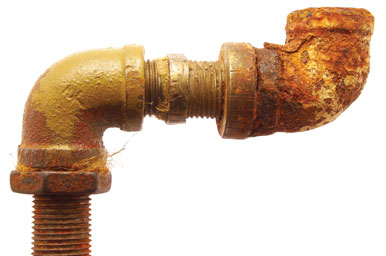
Nearly a half century after pediatrician Herbert Needleman first documented the dangerous neurological impacts of even the smallest concentrations of lead in children, the heavy metal continues to be a toxic headache for nearly 10 million American households.
A first-of-its-kind study from researchers at the School of Public Affairs’ Center for Environmental Policy—conducted in partnership with the Environmental Defense Fund and DC Water—reveals that remediation efforts that rely on customers sharing the cost of replacing lead pipes can leave low-income and African American households at greater risk for continued exposure.
The report, published in the December 2021 issue of Sustainability, analyzed nine years’ worth of data from a lead pipe replacement program in DC. Although the local utility company simplified the process for homeowners, replacement estimates still averaged $2,500 and ranged as high as $10,000, rendering the expense untenable for many Washingtonians.
As a result, rates of full lead pipe replacement were two to three times higher in the city’s highest-income areas than in its lowest. “It was an unintended consequence, but not entirely unexpected given the cost,” says lead author Karen Baehler, SPA scholar in residence and associate dean of faculty.
Since the ’70s, blood lead levels (BLLs) in American children have dropped by an average of 95 percent. However, higher BLLs are disproportionately found in children of color and low-income families exposed to lead in paint, soil, and water. Even low levels of exposure are linked to neurological damage, learning disabilities, hearing impairment, and stunted growth among youngsters and cardiovascular disease among adults.
In 2019, the District adopted a new policy to remedy the problem, footing the entire bill for some types of replacements and subsidizing others based on homeowners’ income. The research team—which includes SPA professorial lecturer Marquise McGraw; Michele Aquino, SPA/PhD ’24; and Ryan Heslin, CAS-SPA/MS ’22—recommends the program as a model for other communities facing similar disparities.
“Making sure that people have access to good, clean, safe drinking water is the bare minimum that we can do as a society,” McGraw says. “It’s important that we take the lessons that we’ve learned from this paper and get serious about designing polices which explicitly incorporate equity and fairness to right some of these historical wrongs.”